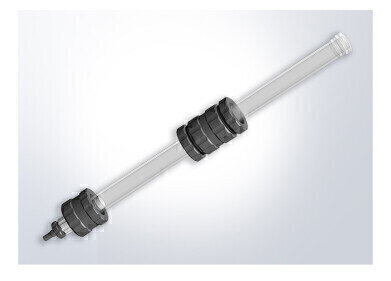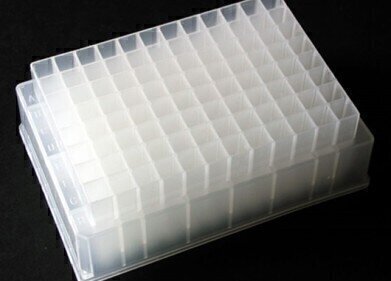Preparative
Separation and purification of samples using the new Kromasil 300 Å diC4
Sep 27 2017
Kromasil 300 Å diC4 spherical silica stationary phase is the latest Kromasil phase launched for the separation and purification of large peptides and proteins. This new stationary phase is the alternative to large pore, C4 derivatized materials used for the analysis and isolation compounds including those in complex biomolecule samples.
Preparative chromatographers focus on the isolation of key compounds from substance characterization or toxicology studies to process development work for clinical studies and production of APIs. When smaller quantities of material are required, scientists and researchers carry out their runs in slurry packed columns with 10-50 mm in diameter and for larger quantities users purify material by packing their own columns. Variations in stationary phase chemistry are exploited for best selectivity and overload to achieve conditions to meet the required purification goals. Kromasil stationary phases are recognized worldwide for being the workhorses in the purification of low molecular weight compounds, small peptides as well as large biomolecules.
In particular, the Kromasil 300 Å line of products, originally consisting of C18, C8 and C4 derivatizations for reversed-phase HPLC, has now been expanded to include the Kromasil 300 Å diC4 stationary phase. This new stationary phase differs in characteristics to the classic C4, giving HPLC users new opportunities to succeed in the removal of unwanted impurities from peptide and protein crudes. While similar in carbon content and packing density to the Kromasil 300 Å C4, the new Kromasil 300 Å diC4 contains a ligand with two C4. For chemistry characteristics see Figure 1.
Evaluation of Kromasil 300 Å C4 and diC4 materials were carried out for a given biosample, see separation in Figure 2. As seen in the figure, due to the impurities’ characteristics in this sample, there was better resolution with the diC4 ligand, where the retention of key impurities was lower than the main peak. This benefit was especially important for achieving certain purity and simultaneously bring down impurity concentrations to a required level (example < 0.1% impurities). Further evaluations were carried out using the well-known Tanaka test (refer to Figure 3). This test is a tool to determine hydrophobicity, steric selectivity, silanol activity and ion exchange capacity. The study concluded that the diC4 had higher silanol activity, exhibited lower retention capacity had better ion exchange capacity at neutral pH. The Kromasil 300 Å diC4 phase showed to be more advantageous when the sample had impurities that were tougher to elute, had strong adsorption.
As a member of the 300 Å family, this new phase has all the benefits, such as high available surface, and excellent mechanical and chemical stability, from the Kromasil Classic platform.
For more information please click here.
Events
Apr 22 2025 Kintex, South Korea
Analytica Anacon India & IndiaLabExpo
Apr 23 2025 Mumbai, India
Apr 27 2025 Portland, OR, USA
May 11 2025 Vienna, Austria
May 18 2025 Tempe. AZ, USA



















